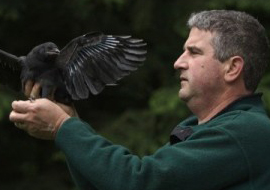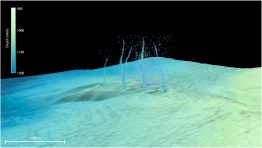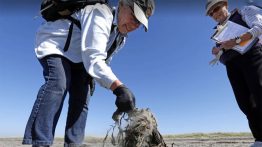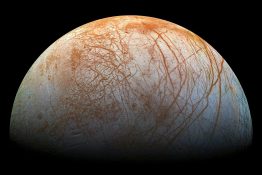John Marzluff is a professor of wildlife science in the UW School of Environmental and Forest Sciences and renowned researcher studying the relationships between birds and humans. In 2022, Marzluff was named American Association for the Advancement of Science Fellow, honored for advances in our understanding of how humans impact birds, and for communicating the importance of birds to the public.
Read more »Warm liquid spewing from Oregon seafloor comes from Cascadia fault, could offer clues to earthquake hazards
The field of plate tectonics is not that old, and scientists continue to learn the details of earthquake-producing geologic faults. The Cascadia Subduction Zone — the eerily quiet offshore fault that threatens to unleash a magnitude-9 earthquake in the Pacific Northwest — still holds many mysteries. A study led by the University of Washington discovered seeps of warm, chemically distinct liquid shooting up from the seafloor about 50 miles off Newport, Oregon.
Read more at UW News »UW’s Phil Levin to direct first-ever US National Nature Assessment
The Biden-Harris Administration on April 3 announced the appointment of Phil Levin, professor of practice in environmental and forest sciences at the University of Washington and lead scientist at The Nature Conservancy in Washington state, as director for the first-ever U.S. National Nature Assessment. The NNA will take an interdisciplinary approach to better understand the role of nature in the lives of people across the country, integrating science with traditional ways of knowing and the needs of communities.
Read more at UW News »Volunteers help UW scientists understand the story behind the dead birds that wash ashore
Thanks to the Coastal Observation and Seabird Survey Team of community volunteers, UW scientists can better understand the health of fragile marine ecosystems, predict the impact of a changing climate or of potential oil spills, and see the devastation of harmful algae blooms. More than a decade ago, Jeanne Finke’s friends invited her to join them for a walk on a stretch of beach known as South Pacific.
Read more at For Washington »Newly discovered form of salty ice could exist on surface of extraterrestrial moons
The red streaks crisscrossing the surface of Europa, one of Jupiter’s moons, are striking. Scientists suspect it is a frozen mixture of water and salts, but its chemical signature is mysterious because it matches no known substance on Earth. An international team led by the University of Washington may have solved the puzzle with the discovery of a new type of solid crystal that forms when water and table salt combine in cold and high-pressure conditions.
Read more at UW News »





